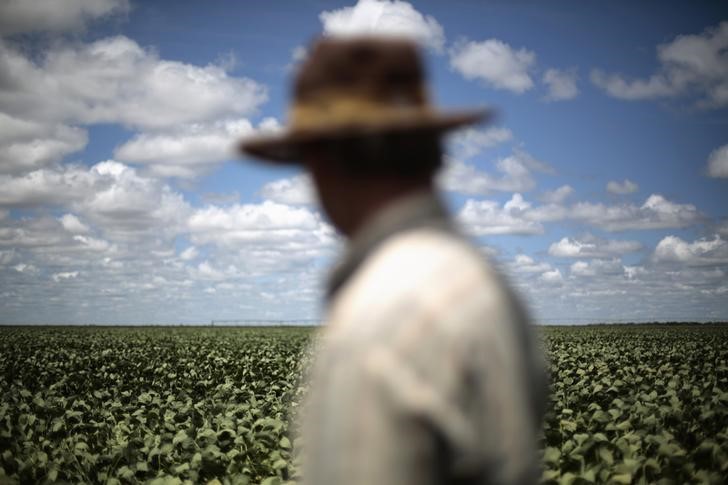Investing.com - U.S. soybean futures fell for the fourth consecutive session on Friday to hit a one-week low as optimism over the outlook for supplies in Brazil and Argentina drove down prices.
On the Chicago Mercantile Exchange, US soybeans for May delivery touched an intraday low of $9.6500 a bushel, the weakest level since March 20, before ending at $9.6720, down 7.2 cents, or 0.74%.
On the week, the May soybean contract dipped 7.38 cents, or 0.54%, the fourth consecutive weekly loss.
Brazil and Argentina are major soybean exporters and compete with the U.S. for business on the global market. Large South American crop prospects could weigh on demand for U.S. supplies.
Meanwhile, US corn for May delivery eased down 0.2 cents, or 0.06%, on Friday to close at $3.9100 a bushel.
Despite Friday's modest decline, the May corn contract tacked on 5.5 cents, or 1.62%, the second straight weekly gain.
On Thursday, prices rallied to $3.9700, the most since January 13, before closing at $3.9120, down 3.6 cents, or 0.95%.
Elsewhere on the Chicago Board of Trade, US wheat for May delivery jumped 8.4 cents, or 1.7%, on Friday to settle at $5.0760 a bushel by close of trade. A day earlier, futures hit $4.9820, the lowest since March 16, before settling at $4.9920, down 19.6 cents, or 3.81%.
For the week, the May wheat contract tumbled 26.0 cents, or 4.22%, amid easing concerns over winter-wheat crop conditions in the U.S.
According to the U.S. Department of Agriculture, Oklahoma winter wheat was rated 44% good to excellent, up from 40% in the previous week, while Texas winter wheat improved by 4% to 55%.
In Kansas, the top wheat-producing state, the wheat crop was rated 41% good to excellent, unchanged from the preceding week.
In the week ahead, market players will focus on the release of the U.S. Department of Agriculture's prospective plantings report on Tuesday, March 31.
The agency will also produce data on crop progress and weekly export sales figures.
Corn is the biggest U.S. crop, followed by soybeans, government figures show. Wheat was fourth, behind hay.
